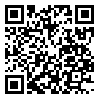BibTeX | RIS | EndNote | Medlars | ProCite | Reference Manager | RefWorks
Send citation to:
URL: http://tumj.tums.ac.ir/article-1-1323-en.html
Valvular and coronary artery disease are among the most important causes of disability and death in the world and Iran as well. Every year, half a million death because of these diseases is reported in United State. The incidence of degenerative and valvular diseases of heart is increasing. Considering the industrialization of our country, the incidence of these kind of problems are increasing as well. In this study, there is an attempt to recognize the causes of cardiac surgery. We conducted a retrospective study in 915 cardiac surgery patients (630 CABG and 285 valve replacement) from 1374 to 1377. In CABG patients, there were 46 cases of reoperation (78.3 percent male 21.7 percent female). The most reoperations for bleeding was less than 24 hours in 90.3 percent. In valvular patients the causes of reoperation were: A) Valvular complications (female/male=3/1), B) Non valvular complications (female/male=1/3). The most common nonvalvular complication was bleeding (66.6 percent). The most common valvular complication was bioprosthetic valve degeneration. The meantime between two operation in valvular complications was 11.8 years. In all cases (915) the incidence of bleeding was 3.8 percent, mediastinitis 0.8 percent, cardiac tamponade 0.8 percent and GI bleeding 0.5 percent.
| Rights and permissions | |
 |
This work is licensed under a Creative Commons Attribution-NonCommercial 4.0 International License. |





